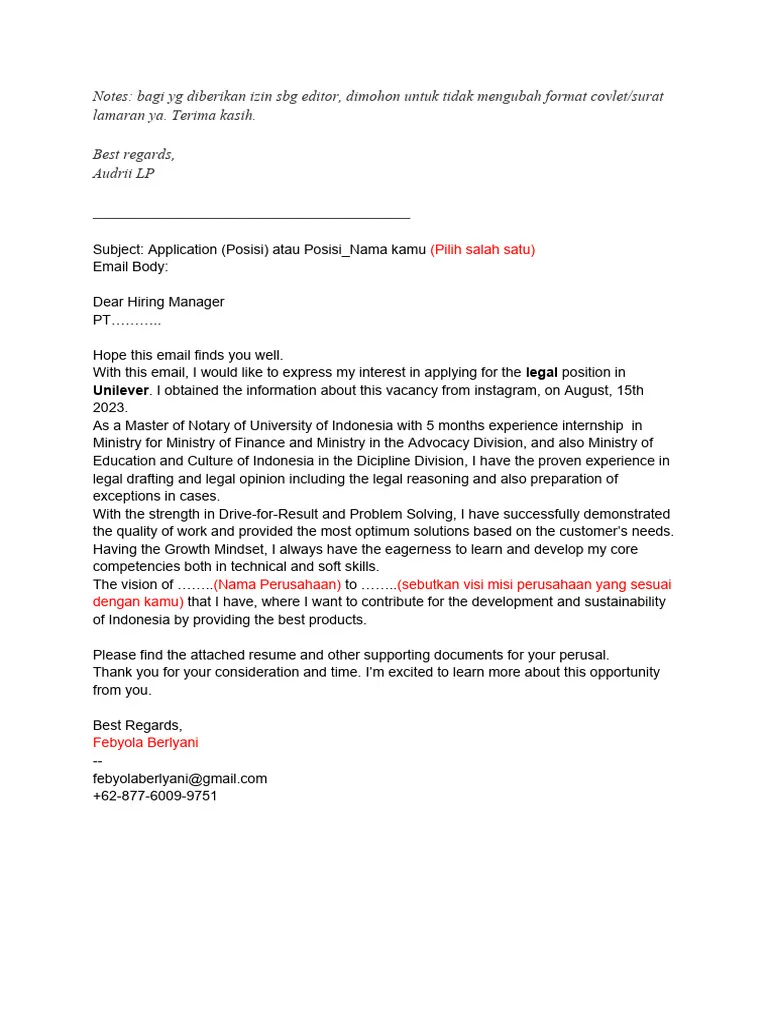Crafting a Powerful English Cover Letter
A well-crafted English cover letter is your first opportunity to make a positive impression on a potential employer. It complements your resume and provides a platform to showcase your personality, skills, and enthusiasm for the specific role. Many job seekers often overlook the importance of a cover letter, but it can significantly impact your chances of getting an interview. This guide will take you through the essential steps to create a powerful English cover letter that grabs the hiring manager’s attention and sets you apart from the competition. By following these guidelines and understanding the nuances of effective cover letter writing, you can significantly increase your prospects of landing your dream job. Remember, a compelling cover letter is not merely a formality; it is a powerful tool that can help you unlock the doors to your desired career path.
Understanding the Purpose of a Cover Letter
The primary goal of a cover letter is to introduce you to the hiring manager and express your interest in a specific job. It’s your chance to tell your story and explain why you are the ideal candidate for the position. Unlike a resume, which provides a factual overview of your experience, a cover letter allows you to connect with the reader on a more personal level. It provides context, explains your motivations, and highlights the specific skills and experiences that make you a perfect fit for the role. The cover letter also demonstrates your communication skills and your understanding of the company and the job requirements. It shows that you have taken the time to carefully consider the opportunity and tailor your application accordingly, setting you apart from applicants who may be submitting generic resumes.
Why is a Cover Letter Important
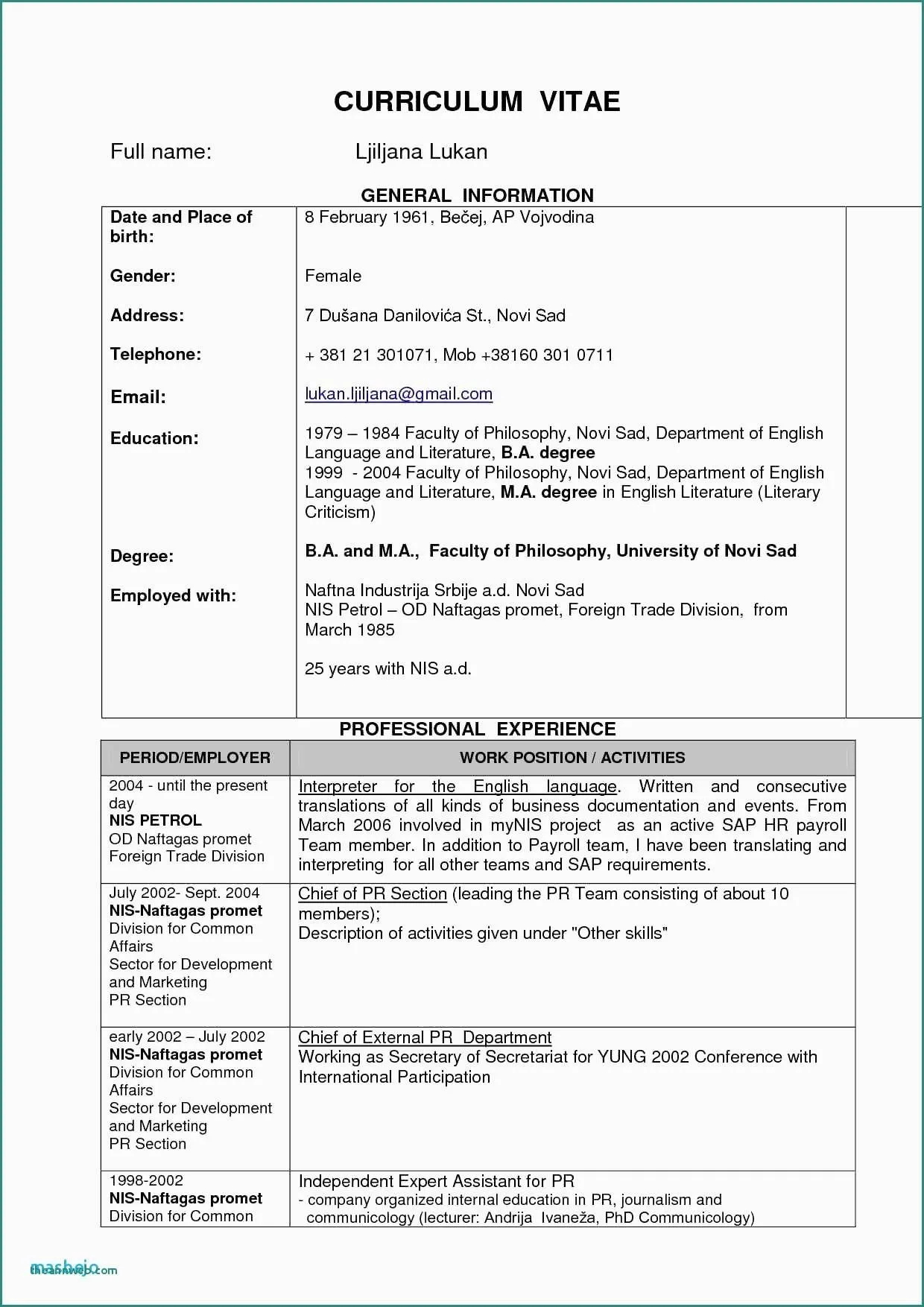
A cover letter allows you to personalize your application, demonstrating to the employer that you are genuinely interested in the specific role and company. It shows that you understand the job requirements and possess the skills and experience to meet the demands of the position. Many employers use cover letters to assess a candidate’s writing and communication skills, as well as their attention to detail. A well-written cover letter can also help you overcome perceived shortcomings in your resume, such as a gap in employment or a career change. The cover letter gives you the chance to explain these situations and reframe your qualifications in a positive light. Finally, it provides an opportunity to showcase your enthusiasm for the company and the industry.
Key Components of an Effective Cover Letter
A strong cover letter includes several essential components that work together to create a compelling narrative. These include your contact information, the date, the hiring manager’s information, a professional salutation, a captivating opening paragraph, a section highlighting your skills and experience, an expression of enthusiasm, and a strong closing. Each section plays a crucial role in presenting you as a suitable candidate, demonstrating your understanding of the job, and expressing your genuine interest in the opportunity. Mastering these components will significantly enhance your cover letter’s effectiveness and increase your chances of securing an interview. Ensure that you tailor each component to fit the specific job and the company’s culture.
Your Contact Information
At the top of your cover letter, include your full name, address, phone number, and professional email address. Ensure the information is accurate and up-to-date. Use a clear and professional font that’s easy to read, like Arial or Times New Roman. The goal is to make it easy for the hiring manager to contact you, so double-check that your email address is appropriate and that your voicemail greeting is professional. This simple step is essential and sets the stage for your professionalism and attention to detail, which are critical for making a positive first impression. Always use a professional email address. Avoid using nicknames or unprofessional language in the address.
The Date
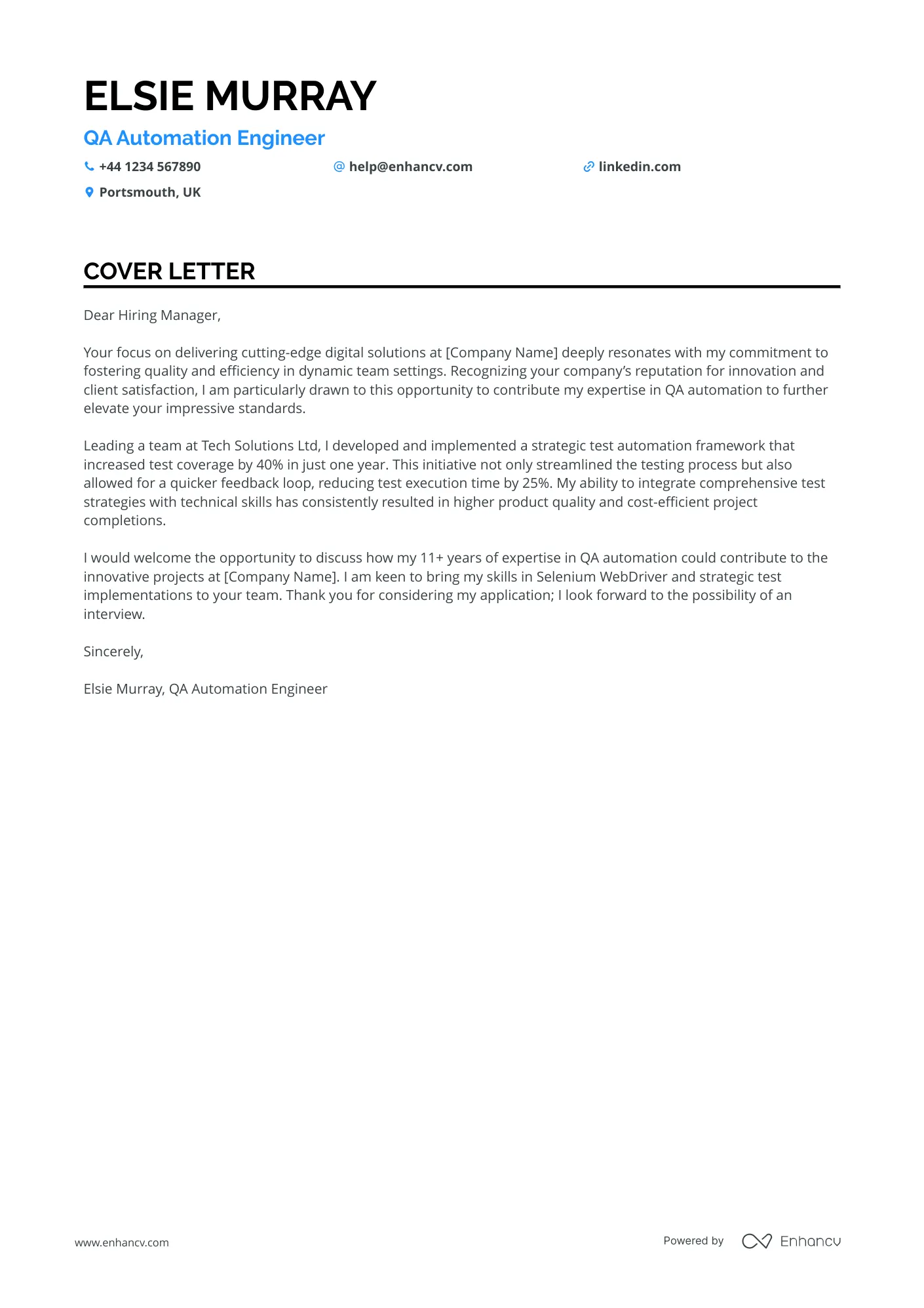
Immediately below your contact information, include the date you are writing the letter. This provides the hiring manager with context and allows them to understand when you submitted your application. The date should be formatted correctly, following the standard conventions for the region or country where you’re applying. For example, in the United States, this format is Month, Day, Year; and in the UK, it would be Day, Month, Year. Proper formatting is essential for demonstrating attention to detail. The date is a small but crucial detail that contributes to the overall professionalism of your cover letter, ensuring clarity and accuracy. It’s a subtle but important aspect of your cover letter, reinforcing your commitment to a thorough and polished application.
The Hiring Manager’s Information
Address your cover letter to a specific person whenever possible. Research the hiring manager’s name and title through LinkedIn, the company website, or by contacting the company’s HR department. Addressing the letter to a specific individual demonstrates initiative and attention to detail. If you cannot find the hiring manager’s name, use a general salutation such as ‘Dear Hiring Manager,’ but try your best to find a name. Researching the hiring manager shows you’ve gone the extra mile. If you know the hiring manager’s name, it allows you to personalize the letter and make a stronger connection. This personal touch can significantly increase your chances of getting noticed among many other applications. The act of addressing a letter to an actual person gives it a much more human and engaging tone.
The Salutation
Begin your cover letter with a professional salutation. If you know the hiring manager’s name, use ‘Dear Mr./Ms./Mx. [Last Name]’. Otherwise, use a general greeting such as ‘Dear Hiring Manager’. Avoid overly informal greetings like ‘Hi’ or ‘Hello’ in a professional context. The salutation sets the tone for the entire letter, so it’s important to get it right. Using a correct salutation conveys respect and professionalism. When addressing a specific person, ensure you have the correct title and spelling of the name. A well-chosen salutation immediately establishes a positive rapport and demonstrates your attention to detail. A personalized salutation is more engaging and makes the hiring manager feel that you’ve taken the time to learn about them and the company.
Writing a Compelling Opening Paragraph
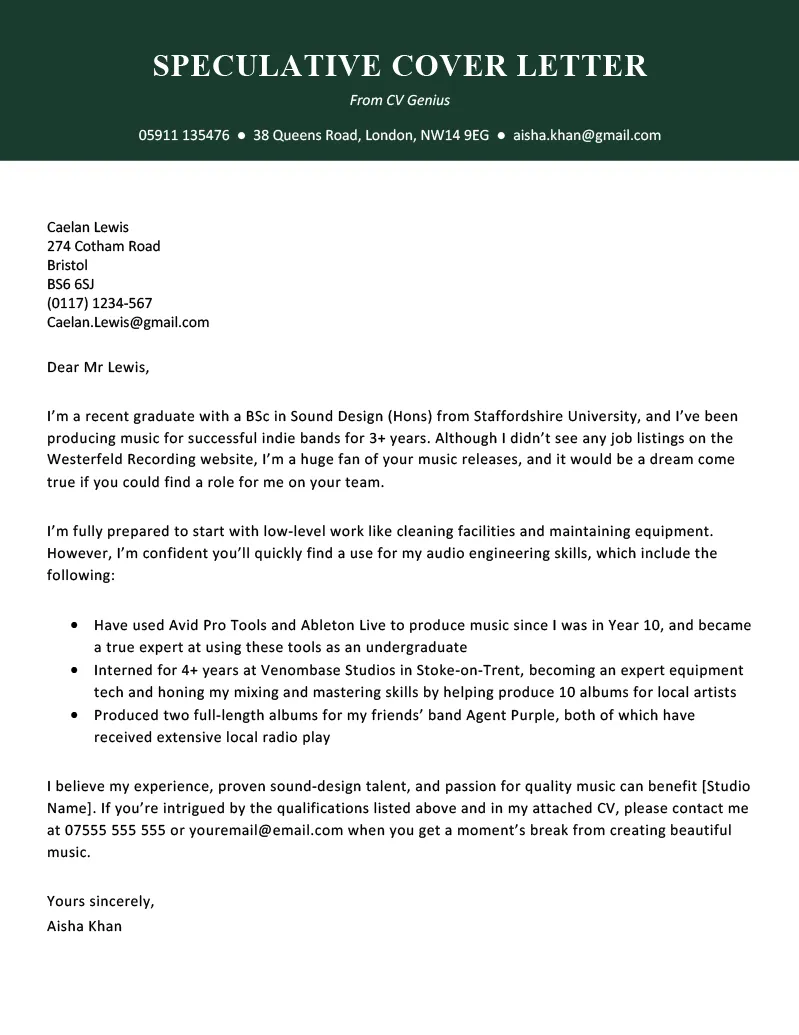
The opening paragraph is your first chance to grab the hiring manager’s attention. Start by clearly stating the position you are applying for and where you saw the job posting. Briefly mention why you are interested in the role and the company. This is the hook that gets them interested in reading the rest of your letter. A strong opening sets the tone and immediately indicates your understanding of the role and your enthusiasm. Keep it concise and focused, and aim to create an immediate sense of your value as a candidate. Instead of generic phrases, try something unique that reflects your personality and highlights your key qualifications, such as a specific achievement or a skill. Remember, this first paragraph should make the hiring manager want to read more.
Highlighting Your Skills and Experience
This section is the core of your cover letter. Elaborate on your skills and experience that are most relevant to the job description. Use specific examples to illustrate your accomplishments and quantify your results whenever possible. Mention skills and experiences that directly align with the job requirements. Focus on how your skills and experience benefit the employer. Show, don’t just tell; illustrate your abilities with achievements and data. This section is where you show how you can deliver results. When highlighting your achievements, use action verbs, and provide concrete examples that demonstrate your capabilities. It’s crucial to tailor this section to each specific job, making sure to align your skills and experiences with the job requirements.
Tailoring Your Letter to the Job Description
Carefully review the job description and identify the key requirements and skills the employer is seeking. Customize your cover letter to address each of these requirements directly. Use the same keywords and phrases from the job description when describing your skills and experience. Show how your qualifications align with the specific job duties. Demonstrate that you understand the role and the needs of the company. Tailoring shows the employer that you have taken the time to research the position and are genuinely interested in the opportunity. Tailoring your cover letter to the specific job requirements demonstrates your ability to understand and meet the demands of the position, significantly boosting your chances of success.
Quantifying Your Achievements
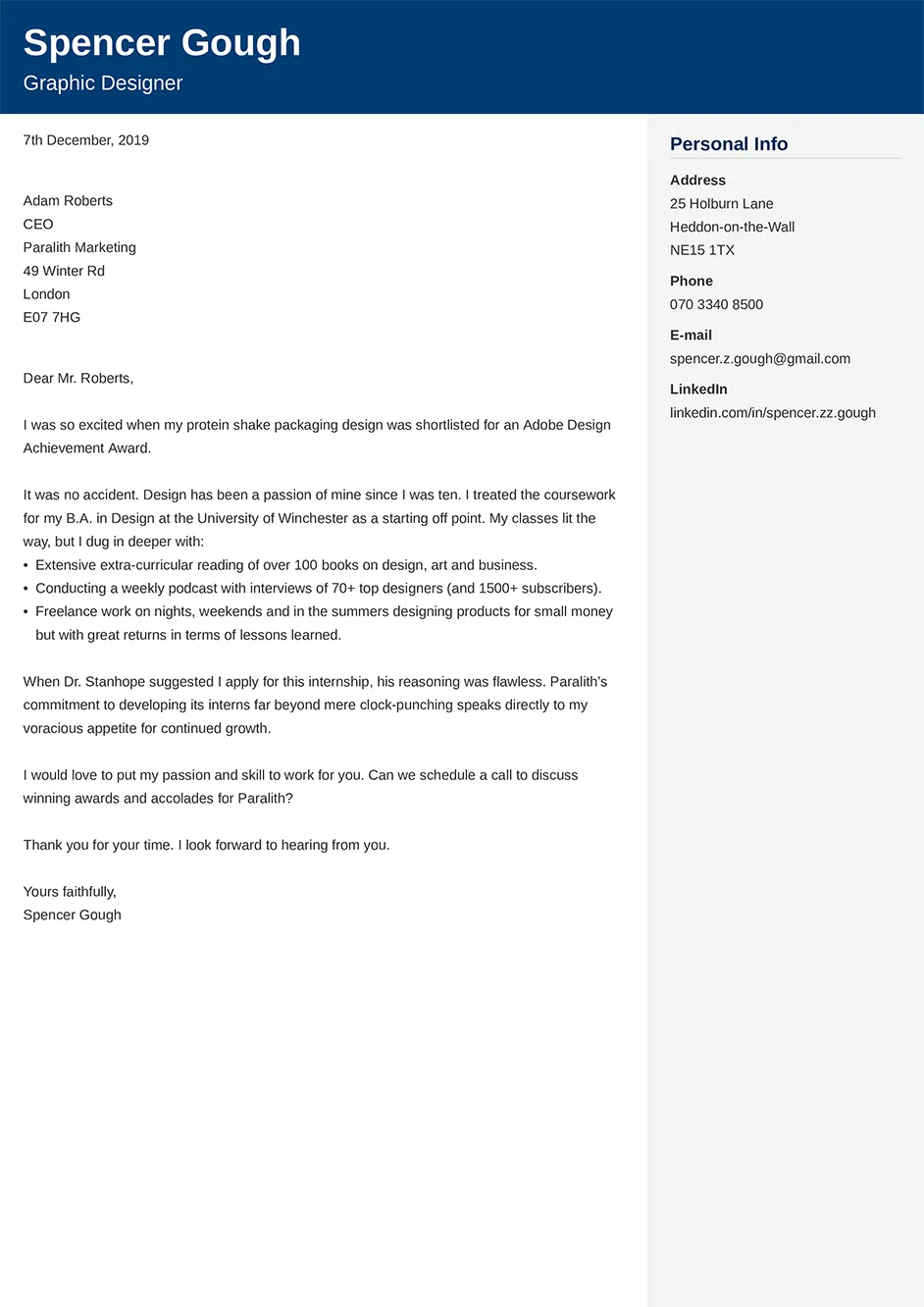
Whenever possible, use numbers and data to quantify your achievements. This makes your accomplishments more impactful and easier for the hiring manager to understand. Instead of saying you ‘improved sales,’ state that you ‘increased sales by 15% in one quarter.’ Include statistics or metrics to back up your claims. Quantifying your achievements shows that you have the ability to deliver tangible results. Provide concrete examples that demonstrate the impact you have made in previous roles. This makes your qualifications more persuasive and memorable. Measurable accomplishments give the hiring manager a clear picture of what you can bring to the table, greatly increasing your credibility and the likelihood of an interview.
Demonstrating Your Enthusiasm
Express your genuine enthusiasm for the position and the company. Explain why you are excited about the opportunity and what motivates you. Show that you have researched the company and understand its mission and values. Illustrate how your career goals align with the company’s objectives. Enthusiasm is infectious and can set you apart from other candidates. Your enthusiasm should come across in every aspect of your cover letter. Show that you are not just applying for any job, but this job. This helps the hiring manager understand that you are passionate about the role and the company. Passion is attractive, and conveying enthusiasm will make you a more memorable candidate, making them more likely to call you in for an interview.
Closing Your Cover Letter Effectively
The closing of your cover letter should summarize your interest and reiterate your qualifications. Express gratitude for the hiring manager’s time and consideration. Include a call to action, such as inviting them to contact you for an interview. Ensure your closing is professional, concise, and leaves a lasting positive impression. A strong closing reinforces your enthusiasm and leaves the hiring manager with a clear path for moving forward with your application. The closing paragraphs are just as important as the opening; it reinforces your key selling points. A well-written closing reinforces your key selling points and gives the reader a clear path for next steps.
Expressing Gratitude
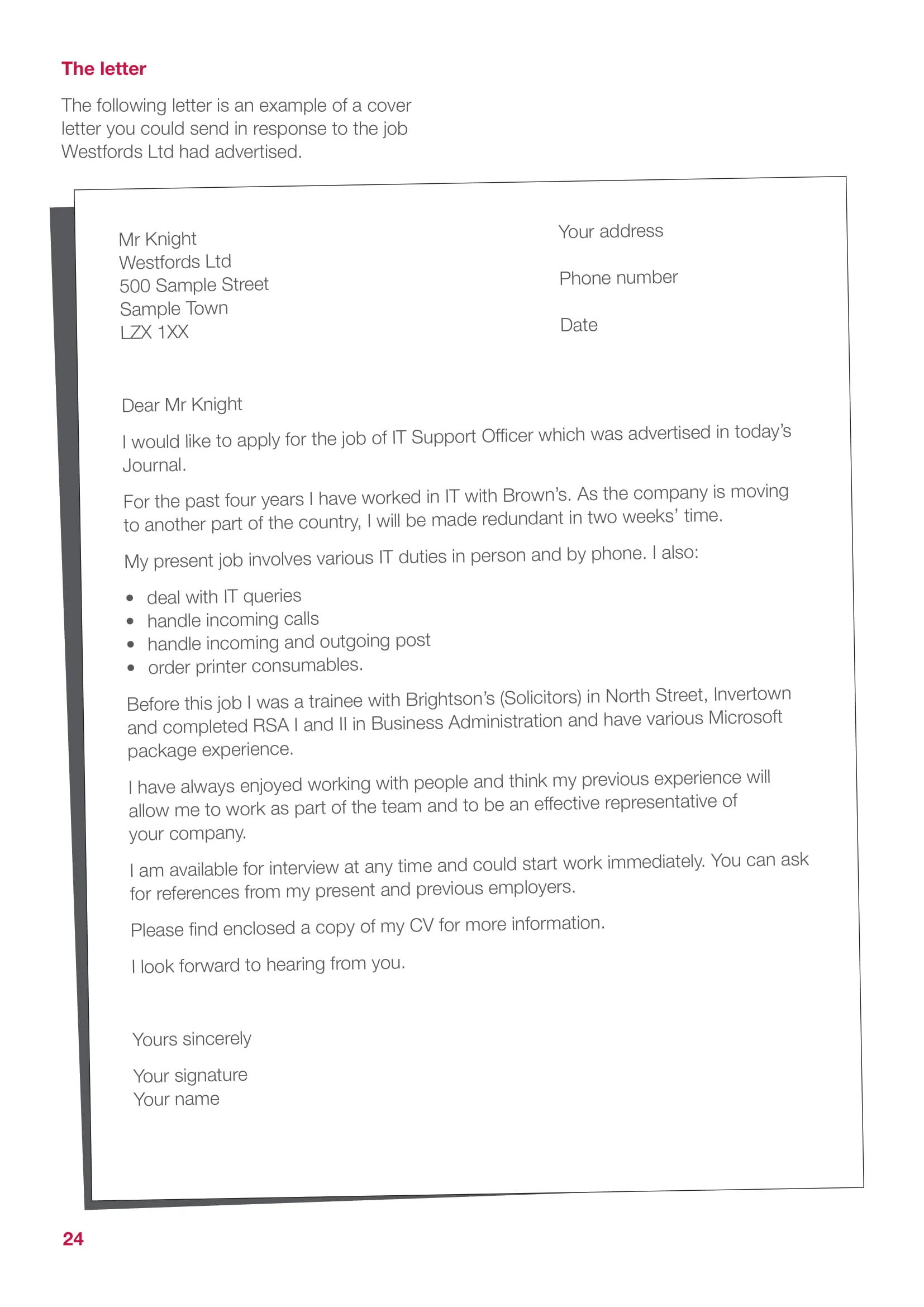
Thank the hiring manager for their time and consideration. Show that you appreciate the opportunity to be considered for the position. Expressing gratitude is a sign of respect and professionalism. A simple thank you can go a long way in making a positive impression. It reinforces your politeness. Thanking the hiring manager shows that you value their time and respect the effort they have put into reviewing your application. This simple gesture can significantly improve your chances of moving to the next stage.
Including a Call to Action
Conclude your cover letter with a clear call to action. Invite the hiring manager to contact you for an interview. Make it easy for them to take the next step. Include your phone number and email address for easy contact. A call to action prompts the hiring manager to take the next step and moves your application forward. The call to action should be confident and professional. A clear call to action encourages them to reach out and schedule an interview, demonstrating your eagerness to discuss your qualifications further. A well-defined call to action guides them towards the next step.
Formatting and Proofreading Your Cover Letter
Proper formatting and meticulous proofreading are crucial for creating a professional cover letter. These steps help ensure your letter is easy to read, error-free, and makes a positive impression. Attention to detail is key when applying for jobs, and formatting and proofreading reflect your commitment to quality and professionalism. A cover letter with poor formatting or grammatical errors can lead to your application being dismissed, even if you are a great candidate. A polished cover letter demonstrates respect for the employer’s time and professionalism.
Choosing the Right Font and Formatting
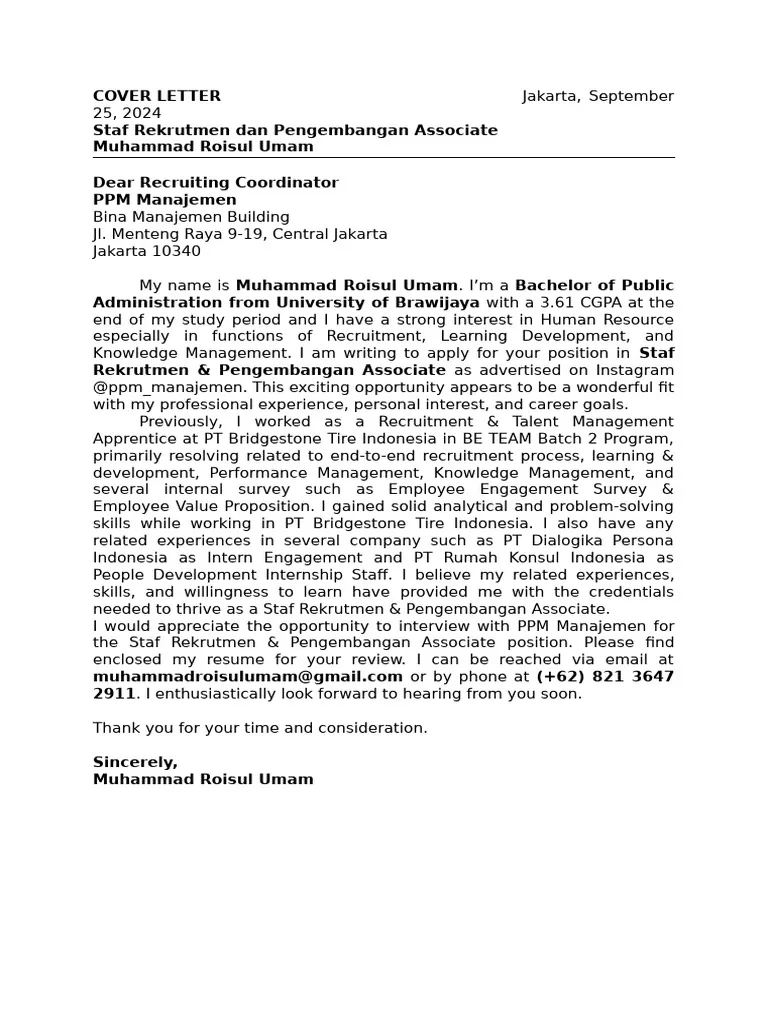
Choose a professional and easy-to-read font, such as Arial, Times New Roman, or Calibri. Use a font size of 11 or 12 points. Ensure the text is well-spaced with clear margins (1 inch on all sides). Use a professional and clean layout. Consistency is crucial; use consistent font sizes, margins, and paragraph spacing throughout the document. This creates a professional and polished appearance. The right formatting makes your cover letter easy to read and visually appealing. Using standard formatting ensures a clear and professional presentation. A well-formatted cover letter demonstrates attention to detail and respect for the reader. Avoid excessively decorative fonts. Your goal is to be clear and professional, not distracting.
Proofreading for Errors and Clarity
Carefully proofread your cover letter for any grammatical errors, spelling mistakes, and punctuation errors. Check for clarity and ensure your sentences are easy to understand. Read your cover letter aloud to catch any awkward phrasing. Proofread multiple times, and consider asking someone else to review it as well. Errors can undermine your credibility, so it is very important. A well-proofread cover letter shows attention to detail. Thorough proofreading guarantees that your message is clear and professional. Carefully reviewing your cover letter for mistakes is non-negotiable. Proofreading demonstrates your commitment to quality and ensures that your writing is as polished as possible. Errors can severely detract from your professionalism. Use spell check and grammar check, but don’t rely on them entirely.
Reviewing and Refining Your Cover Letter
Once you have written your cover letter, take the time to review and refine it. This is a vital step in the process and can dramatically increase the effectiveness of your application. Revising your cover letter allows you to identify areas for improvement. It helps ensure your letter is polished and makes the best possible impression. The review process is about identifying and addressing any weaknesses, polishing your writing, and tailoring it for the specific job. A well-revised cover letter is a mark of professionalism and can significantly improve your chances of securing an interview.
Getting Feedback From Others
Ask trusted friends, family members, or career counselors to review your cover letter. They can provide valuable feedback on your writing style, clarity, and content. Another set of eyes can catch errors or suggest improvements that you might have missed. Get feedback from multiple sources to get a range of perspectives. Feedback from others can help you identify areas for improvement and ensure your cover letter effectively communicates your qualifications. This step allows you to polish your letter and make sure it is the best it can be before submitting. Remember, others may notice mistakes or have insights that you might have missed. Fresh perspectives can make a significant difference.
Using English Cover Letter Examples for Inspiration
Reviewing cover letter examples can provide you with a solid understanding of the format, structure, and language used in effective cover letters. These examples can serve as a template for your writing. Look for examples related to your industry and the type of job you are applying for. Adapt the examples to fit your own experiences and qualifications. Cover letter examples can inspire you to write a compelling letter. Use them as a starting point, but tailor them to your situation. Examples can help you understand how to structure your letter, highlight your skills, and make a compelling case for your candidacy. However, never copy examples directly; always tailor the example to your specific situation, skills, and the specific job you are applying for.
Adapting Examples to Your Situation
When using cover letter examples, ensure you customize them to reflect your unique skills, experiences, and the specific job you are applying for. Do not simply copy and paste; adapt the content to fit your background and the job description. Replace generic phrases with specific details about your accomplishments. Tailor the examples to your industry, skill set, and career goals. Make the cover letter your own; personalize the examples with your unique experiences and qualifications. Adapt them to the company, the job, and the industry. Modifying examples increases your chance of success. Customizing examples improves your chances of getting noticed by the hiring manager, by showing that you have taken the time to tailor your application to the job and the company.
Common Mistakes to Avoid
Avoid common mistakes that can hurt your chances of getting hired. Ensure you are not using generic templates. Avoid typos and grammatical errors. Do not simply restate your resume. Make sure your letter is not too long. Avoid using jargon or overly complex language. A well-written cover letter can make a huge difference. A poorly written one will damage your candidacy. A successful cover letter highlights your skills, expresses your enthusiasm, and demonstrates your understanding of the role. Be sure you have a compelling cover letter, which is tailored to the job, and free of errors, to maximize your chances of landing your dream job. By avoiding common pitfalls, you can create a powerful cover letter that sets you apart.
